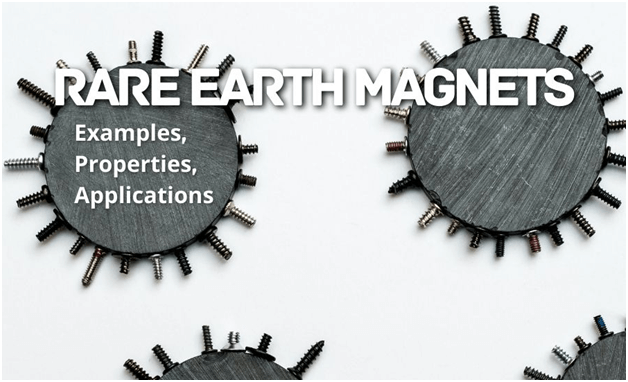Due to their performance and affordability, rare earth magnets are used widely in today’s technology and industrial applications. Just are quite popular for use in hobbies, crafts, and DIY. Rare earth magnets are the materials of choice when strength is of paramount importance.
Actually, rare earth magnets are quite abundant in nature. They are called “rare earth” because they are not available in very large deposits in the earth’s crust, unlike most other substances that are available in large concentrated deposits. Instead, they are dispersed among other elements. Rare earth magnets are the strongest permanent magnets in the world, and they have significantly higher performance than ferrite and alnico magnets.
The two types of rare-earth magnet materials are Samarium Cobalt (SmCo) and Neodymium (Nd-Fe-B) magnets, both of which have different magnetic strength and performance. Neodymium is the strongest of the two and is more widely used than Samarium Cobalt magnets.
Neodymium magnets consist of alloys of neodymium, iron, and boron. They are brittle and vulnerable to corrosion. To protect it from corrosion due to oxidation, manufacturers often plate the material to protect it. Neodymium magnets are the strongest magnets on the market today, and they have very high resistance to demagnetization. Common applications of Neodymium include Magnetic magnetic separators, linear actuators, microphones and headphones, DC motors, analysis, and for making some medical devices.
Samarium Cobalt magnets, on the other hand, are made primarily from alloys of samarium, cobalt, and iron. Typically, they`re quite difficult to demagnetize and have moderately high operating temperatures and very high resistance to corrosion. To further enhance their resistance to corrosive attacks, these magnets can also be coated. Some of the common applications of Samarium Cobalt magnets include:
- Magnetic separators
- Traveling wave tubes
- Linear actuators and satellite systems
- In medical devices, magnetic couplings, and equipment used for automotive, aerospace, military, and industrial automation processes
- Computer disc drives and sensors
- High-performance electric motors, especially where temperature is important
Samarium Cobalt magnets are very brittle. This means that they are prone to chipping and cracking. Special machining techniques are therefore needed to protect the material from wear and tear. This typically involves using diamond-grinding to machine the material before magnetization. One of the biggest advantages of samarium cobalt magnets is that they exhibit very stable magnetic properties, even at high temperatures.
This ability of samarium cobalt magnets to withstand changes under high temperatures is an essential property that makes them suitable for application where temperatures can go up to 572°F (300°C). They step up to the occasion whenever the stability of magnetic characteristics is critical. Neodymium (Nd) magnets, on the other hand, require high levels of rare dysprosium (Dy) to function at moderate temperatures.
Permanent Magnets in Automotive Designs
One of the most impressive uses of permanent magnets is in the manufacture of automobiles. The automotive industry uses ceramic (also known as ferrite) magnets to make vehicles safer. We see this in the Anti-lock Braking System (ABS) of modern-day vehicles. The magnets in this Anti-lock Braking system slow the car down, while still allowing the driver to steer.
Even when accidents do occur, as in formula one car racing, the in-built ABS systems help make accidents less severe or work to prevent them from happening at all. These magnets are also applied in the windshield wipers, and the seat belt indicator. Hence, permanent magnets in automobiles serve for both convenience and safety.



